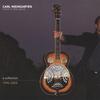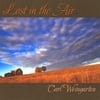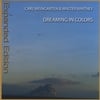
When I was a kid, my father bought our family’s first new car, a white 1966 Dodge Dart. The Dart was the Cadillac for the working class. However, never to indulge, my father purchased a model with only basic standard equipment, manual transmission, with no AC or radio. The only extra was a cigarette lighter, which my mother did her best to wear out. However, the car was plenty roomy for the four of us, and the smooth nap-inducing ride made it possible to tolerate our marathon vacation road trips. During those trips my father would drive with Zen like focus, while my mother sat next to him, simultaneously reading and conversing. In the back seat, my brother and I played games and waged endless sibling battles, often ending with my father’s backhand slashing over the front seat like a catapult. Thirteen years later, I took possession and the keys from my father and drove from St. Louis to college in Carbondale Illinois. Despite rust along the fenders, an oil burning engine, and mandatory weekly spark plug cleaning, the Dart was a reliable old friend. One Friday afternoon, during my senior year, I left town for spring break. Just after sunset, I passed through Nashville Illinois heading north. I was tired and anxious to get home. At the far end of town, I came up behind a van as we approached a railroad crossing. The warning lights were flashing at the intersection, but the van continued over the tracks, casually, without hesitation. In this life altering moment of weakness, I was just tired and distracted enough to believe it was safe to follow. From my perspective, the crossing gates had not lowered and there was no train was in sight. In reality, there were no crossing gates at all. There was also an unseen second set of tracks. On those tracks, just out of view, was an oncoming freight train. As my car reached the end of the intersection, with open road just a few feet away, I looked up to my left. Out of the darkness, the engine rolled up like the Titanic. I remember reacting, but nothing more. The train slammed into the back door of my Dodge Dart, kicking us, like a tin can, to the other side of the tracks. Several minutes later I woke up to the conductor yelling at me through a shattered window. The next day, my classmates Jean Kracher and Barbara Lang drove 50 miles from Carbondale to pick me up at the hospital. Dressed in my finest blood soaked sweater and jeans, we drove to the local tow yard where I collected my scattered belongings. Barbara took photos as I stood beside the remains of the family car. Rather than crumple beneath the locomotive, the Dart’s steel body had taken the hit, like a champ, staying in one piece as we spun around. That morning, I stood there, feeling like a crash test dummy on his luckiest day. Smiling through my stitches, I thought at least I’ll get some good pictures. I never saw the photos, but I’ve been blessed to see 30 years since the family car saved my life.


















